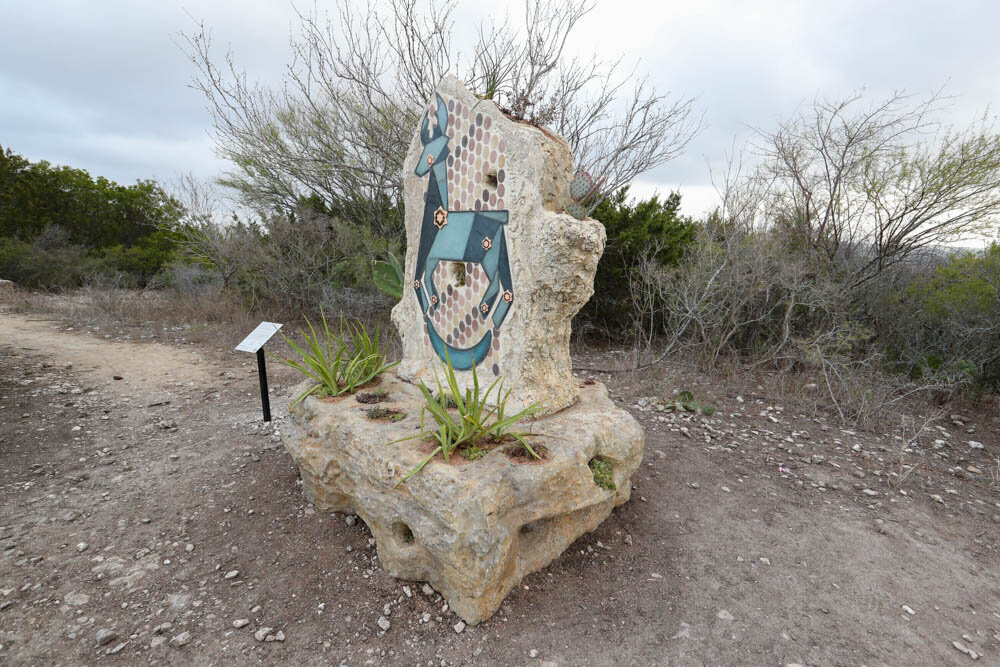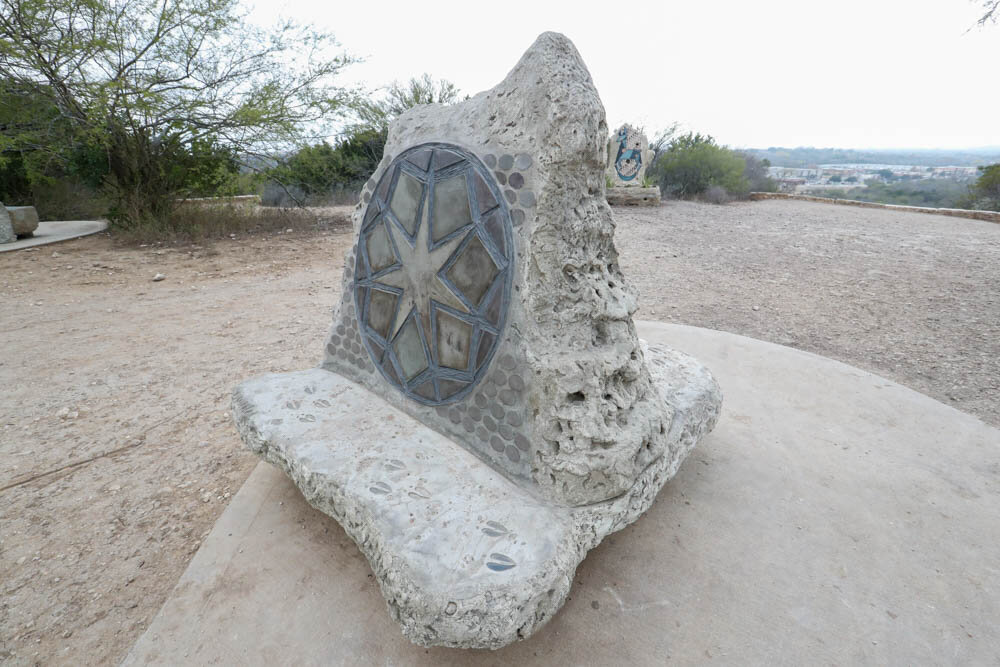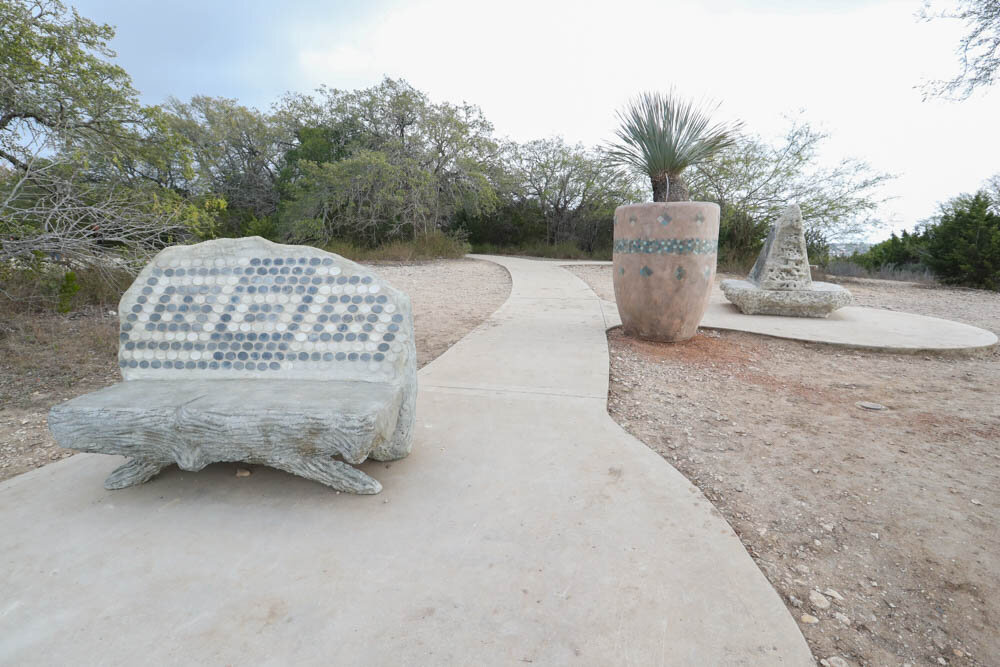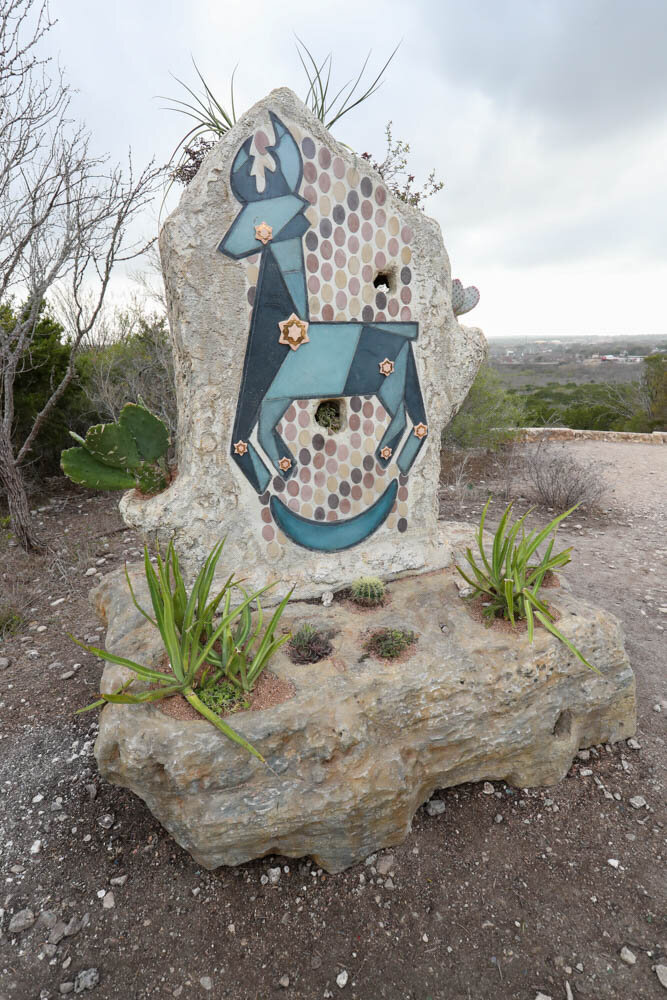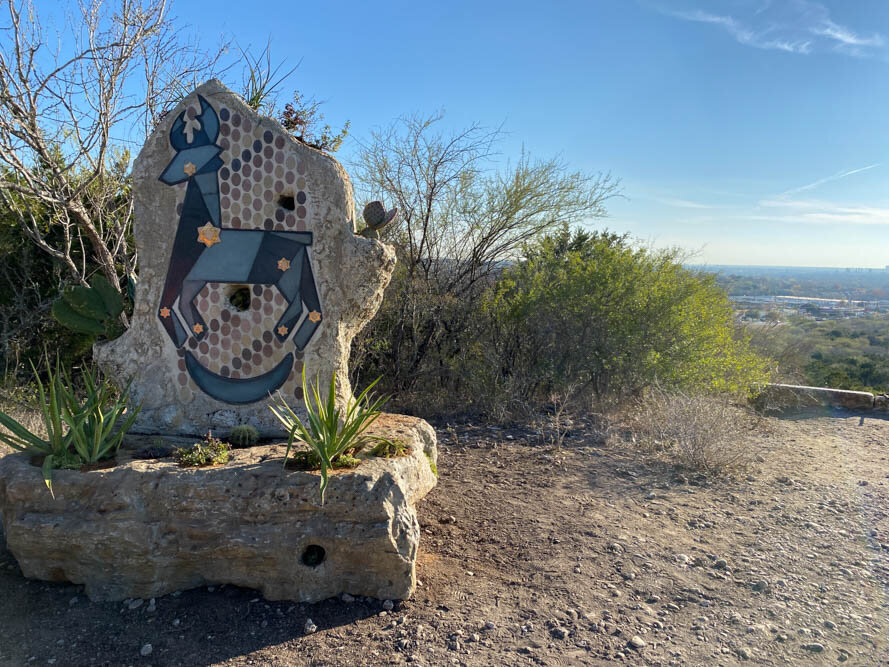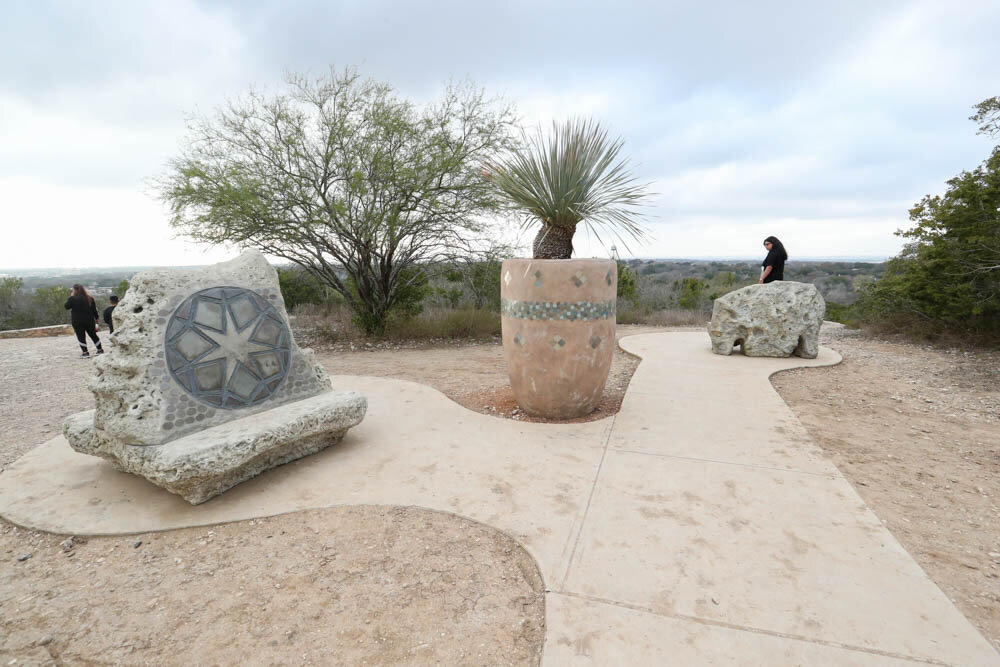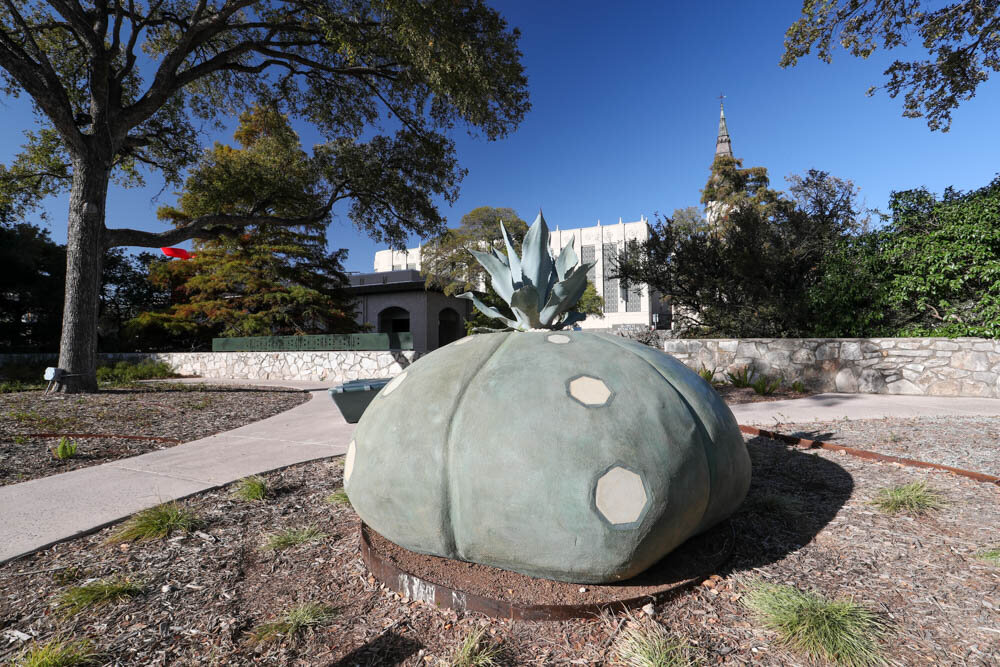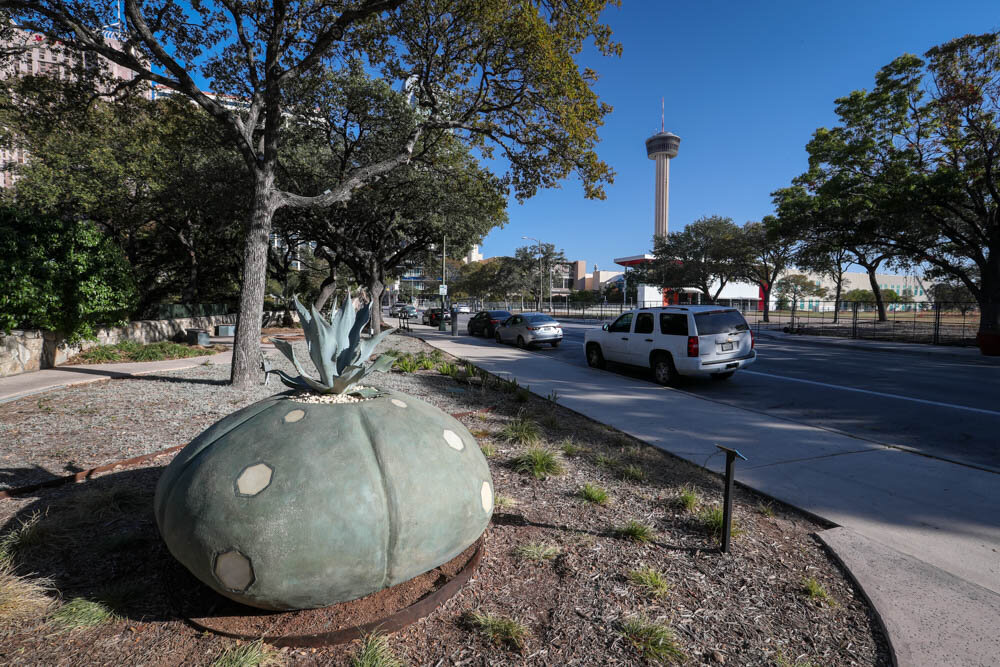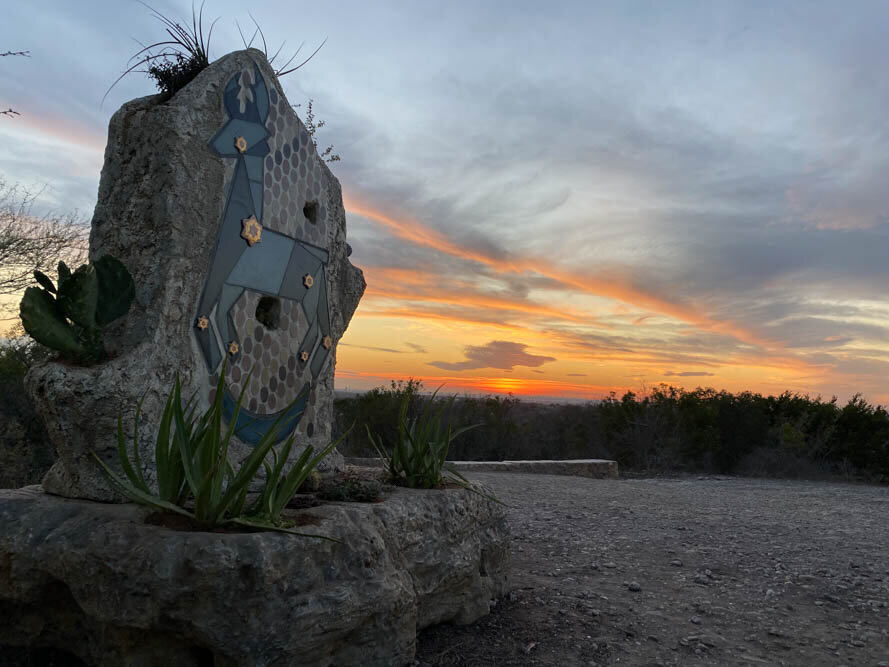Najo Jām ‘Our Home’ Debuts at Comanche Lookout Park
January 25, 2021 - San Antonio
Local artists Carlos Cortés and Doroteo Garza designed and created Comanche Lookout Park’s newest public art installation, “Najo Jām.” Courtesy Images: City of San Antonio.
By: Valeria Torrealba - Staff Intern, San Antonio Sentinel
On Jan. 13, the City of San Antonio’s Department of Arts & Culture and its Public Art Division unveiled “Najo Jām”, a new public art installation at Comanche Lookout Park, created and designed by local artists Carlos Cortés and Doroteo Garza.
Sitting at the peak of Comanche Lookout Park, “Najo Jām” is considered pan-Indian, relating to the multiple indigenous tribes including those that call San Antonio home. The installation features stylized benches, a planter, and a monument that symbolize peyotism used as part of indigenous religious ceremonies. These pieces were created with a signature style passed down from generations called trabajo rustico, which uses reinforced concrete to artistically imitate wood and stone.
“[I am] very excited that we have a partnership between two San Antonio artists, paired together to work on a beautiful project that celebrates the Native American culture in San Antonio,” Director of the City of San Antonio’s Department of Art & Culture Debbie Racca-Sittre said in a promotional video for the artwork.
Meaning “Our Home” in the Coahuiltecan language Pajalate, the artwork pays tribute to indigenous ancestors of South Texas as well as future generations.
“I am a trabajador rustico sculptor,” Cortés said. “I am continuing a tradition that was started, well at least, in my family, by my great uncle and my father. I think that one of the most interesting things about trabajo rustico is that you can pretty much create anything, and you can imitate stone, wood, metal, whatever you can imagine can be done. What I’m building with Doroteo is going to be his canvas, too.”
A central piece of the “Najo Jām'' installation is the monument, which features a half-moon and deer imagery carved in the faux stone. An important food source for indigenous cultures, deer were also revered in spiritual traditions. According to legend, where the deer steps peyote cacti grow. The monument also includes a peyote stitch pattern made of tile reminiscent of beadwork from various tribes including South West and Plains tribes. The pattern is often found on ceremonial rattles used in sacrament.
“Najo Jām” marks the first temporary districtwide connectivity piece to debut at the park.
“The use of trabajorustico for this project is meaningful and intentional, as both the technique and symbols of indigenous culture represent deep and rich traditions,” Cortés said, a third generation trabajo rustico concrete artisan. “It is inspiring to use the skills passed down to me from my father, who learned from my great uncle, to honor and reflect on the ancestors and heritage of this land.”
“Nature is so integral to the indigenous way of life and I am excited for people to connect with the land by viewing and interacting with the artwork while standing in the center of an area so important to indigenous culture and heritage.” - Doroteo Garza
“It is my hope that when park visitors see the installation, they gain an understanding that indigenous stories and memories existed here long before their hike,” Garza said, a multimedia artist with nearly 20 years of experience. “Nature is so integral to the indigenous way of life and I am excited for people to connect with the land by viewing and interacting with the artwork while standing in the center of an area so important to indigenous culture and heritage.”
The artist team of Cortés and Garza also collaborated on a “Najo Jām” oversized planter in the shape of a peyote bud at the River Walk Public Art Garden near the corner of Market and Alamo Streets. The planter is currently on display at the River Walk Public Art Garden before permanently moving to the Comanche Lookout Park installation.
“San Antonio recently celebrated its Tricentennial, but there is more than 10,000 years of indigenous history and culture in this area, especially at Comanche Lookout Park,” Clayton Perry, San Antonio District 10 Councilman, said in the city’s promotional video. “Not only does this artwork serve a functional purpose as a peaceful place to rest after climbing the trails, but it also provides a unique perspective on the people who thrived on and honored this land for many years.”
“Najo Jām” is representative of a welcoming space, inviting interaction and respite after a long hike throughout the park.
“I hope that when people come here, they leave here with the sense that there were stories here way before people came,” Garza said. “There was a people here who had a story, and a way of life, that was so integrated with land.”
For more information about “Najo Jām” and the Department of Arts & Culture’s Public Art Program, please visit SanAntonio.gov/Arts.
Valeria Torrealba is an opinions columnist and public relations assistant at the University Star, a student publication of Texas State University. Email her at reporter@sasentinel.com

